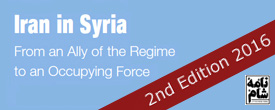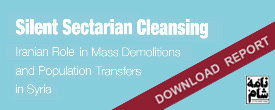 Evin prisoners brutally assaulted by intelligence officers to put pressure on Rouhani
Evin prisoners brutally assaulted by intelligence officers to put pressure on Rouhani
Iranian opposition media reported on 17 April 2014 that a number of political prisoners held in Tehran’s Evin prison had been violently attacked by the prison ‘inspectors’. While the assault itself should obviously be condemned and investigated, broader political questions should also be asked.
According to Kalame website, [1] a number of prisoners in Evin prisoner’s Ward 350 sustained severe injuries after they were attacked by a group of ‘inspectors’ who had entered their cells supposedly for a monthly routine inspection. The report says that, after a short while, the inspection turned into a violent assault on defenseless prisoners. A number of the prisoners were later put in solitary cells despite their injuries.
The head of Iranian detention centers, Gholam Hossein Esmaili, was quick to deny the reports and describe the inspection as a “monthly routine procedure”, blaming “anti-revolutionary” opposition media for “fabricating such lies.” [2] Yet he dismissed appeals by worried family members who asked for permission to visit their loved ones to ensure that their health and safety were fine. The permission would have been granted if there was nothing to hide.
Today Iranian state television channels broadcast video footage recorded by the ‘inspectors’ during the ‘inspection visit’.[3] The footage shows the inmates protesting against something. According to Kalame, quoting eyewitnesses from Evin prison, the inspectors carried several video cameras, which were selectively turned on and off, indicating the assault had been per-planned. [4]
Two day after the incident, however, a letter by 74 of the victims and witnesses of the attack was published. [5] The letter leaves no room for denial. Most of these prisoners belong to the group of activists and journalists who were arrested following the 2009’s post-election events. In the letter, they confirm that they were attacked by plain cloths ‘intelligence officers’, a term usually used to describe officers from the Ministry of Intelligence or members of Sepah Pasdaran’s intelligence unit.
According to the prisoners, the officers used batons and metal bars and were assisted by the prison guards. The injuries listed by the prisoners in their letter range from scratches and bruises to broken bones, head injuries and bleeding.
Having witnessed the contradictory statements and irresponsible reactions by officials over the previous few days, worried family members of the prisoners gathered in front of the parliament on April 20. They carried pictures of their loved ones and demanded information and visits. As such events in Iranian prisons are not unheard of, they feared that events make take more tragic turns – like Sattar Beheshti’s torture and death in prison last year. [6]
Eventually, pressure by the families and the media forced officials to permit family members to visit the prison once. The injuries they saw were apparently so horrifying that the mother of one young prisoner fainted and had to be rushed to hospital. [7] Other family members also testified confirming the details contained in the prisoners’ letter. They said the detainees’ feet and hands had been chained to the walls and they had been beaten up by batons and did not receive proper medical treatment in the aftermath of the assault. [8]
EDITOR’S COMMENT:
It goes without saying that violent assaults on defenseless prisoners is strongly condemned by religion, the Iranian constitution as well as international laws and conventions. Yet, the perpetrators of such crimes in Iran are almost never held to account, even when the result has been more serious tragedies such as the death of Zahra Kazemi, Hoda Saber and Sattar Beheshti.
Many believe that these heinous acts are per-planed to put Hassan Rouhani’s government under pressure from the civil society. The ‘intelligence officers’ that the prisoners refer to, whether they were from the Ministry of Information or the intelligence unit of Sepah Pasdaran, historically belong to the hardliners camp ruled by the supreme leader. Iranians who voted for Rouhani should ask themselves what exactly is the difference between Ahmadinejad’s and Rouhani’s terms if, at the end of the day, the supreme leader is the one who calls the shots? How could anyone hope for the perpetrators of this crime to be brought to justice when bigger crimes are not addressed?
We at Naame Shaam demand, again and again, that all prisoners of conscience are released immediately and all human rights abuses stopped, and that those responsible for such abuses – from the lowest-ranking Sepah commander all the way up to Ayatollah Khamenei – are held responsible.
REFERENCES:
[1] http://www.kaleme.com/1393/01/28/klm-180841/[2] http://www.ilna.ir/news/news.cfm?id=161328
[3] http://www.baharnews.ir/vdcex78x.jh8o7i9bbj.txt
[4] http://www.rahesabz.net/story/81966/
[5] http://www.rahesabz.net/story/81966/
[6] http://www.kaleme.com/1393/01/31/klm-181216/
[7] http://www.kaleme.com/1393/02/01/klm-181489/
[8] http://www.kaleme.com/1393/02/01/klm-181420/
We at Naame Shaam demand, again and again, that all prisoners of conscience are released immediately and all human rights abuses stopped, and that those responsible for such abuses – from the lowest-ranking Sepah commander all the way up to Ayatollah Khamenei – are held responsible.
 English
English  فارسی
فارسی  العربية
العربية 




 On Twitter
On Twitter